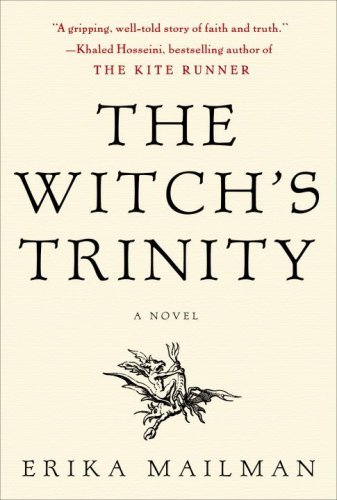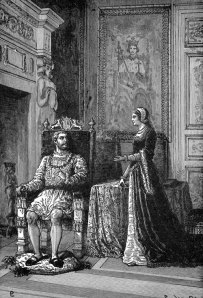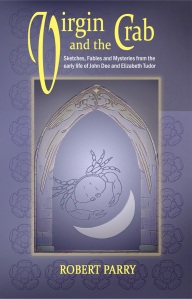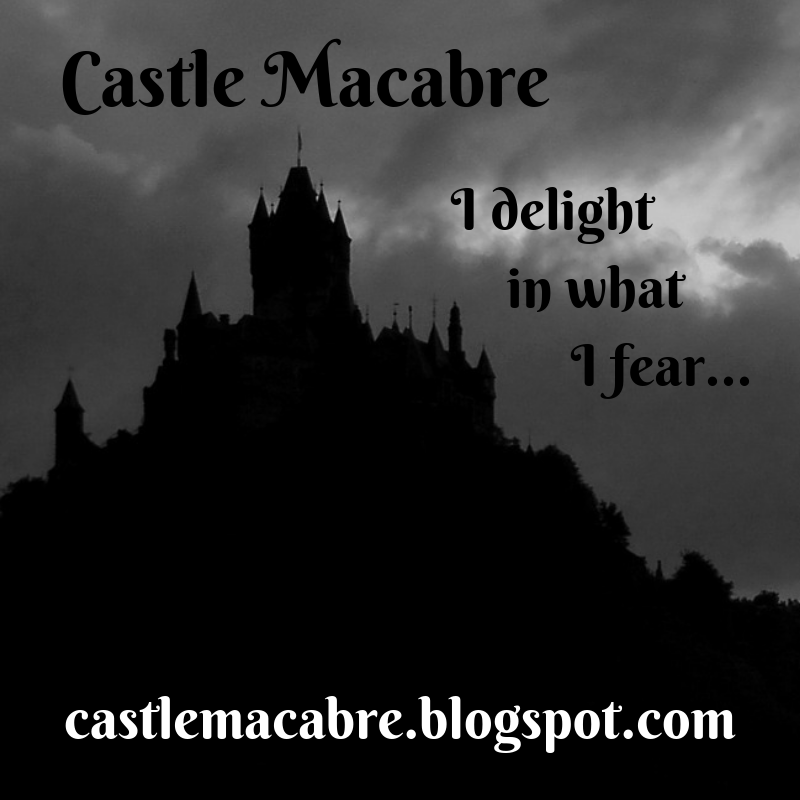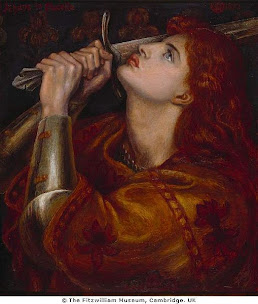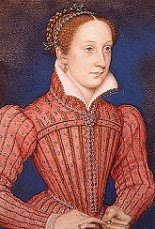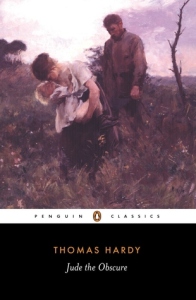
Thomas Hardy and Jude the Obscure
Part I
The novels of Thomas Hardy are known for their tragic heroes and heroines and their grave, socially critical tone. Norton states that “Hardy’s novels…show the forces of nature outside and inside individuals combining to shape human destiny” (1916). Hardy was something of a pioneer in that he attacked dearly held British institutions, such as higher education, social class, and marriage, in his novels and stories. Especially so in Tess of the D’Urbervilles (1891) and Jude the Obscure (1896). In the latter, he lived up to this innovative nature by introducing one of the first feminist characters: the intellectual, free-thinking Sue Bridehead.
Hardy was born in 1840 near Dorchester in England. He trained as an architect and spent most of his life in that occupation. The suicide of his mentor, Horace Moule, greatly affected Hardy and his writing and is said to have spurred the start of his writing career in 1862 (Jude the Obscure Author Bio. 1). His first novel was rejected by publishers in 1868. However, he was encouraged to write another and Desperate Remedies was published anonymously in 1871. His first real success, Under the Greenwood Tree, was published (also anonymously) in 1872. Now embarking on a successful career as a novelist, Hardy gave up the architectural work and wrote many novels, including A Pair of Blue Eyes (1873), Far from the Madding Crowd (1874), The Return of the Native (1878), The Mayor of Casterbridge (1886), The Woodlanders (1887) and his first collection of short stories Wessex Tales (1888). The aforementioned Tess and Jude the Obscure were published in 1891 and 1896 respectively with Jude being his last novel. During this illustrious novelist’s career, he would marry his first wife, Emma Gifford, in 1874 and he would attain a great reputation as a writer and become a renowned presence in London’s literary circles.
Hardy was often regarded as a pessimist although he called himself a “meliorist”, one who believes that the world may be made better by human effort (Norton 1916). Most of his novels are tragic and focus on the ironic in the lives of his characters. In his writing, he acknowledged the role of fate in his character’s lives, but he also revealed that the men and women in his stories “are driven by the demands of their own nature as much as by anything from outside them” (Norton 1916). In Hardy’s plots, usually a female character is found in a love triangle with two male characters who are total opposites. She has the freedom to choose her marriage partner, but upon doing so, she inevitably makes the wrong choice and is destined for an unhappy marriage and strained sexual relations-“Hardy’s rendering of sexuality in both his male and his female characters is marked by its originality and profundity” (Daleski, par. 2).
Although much feminist criticism has considered Hardy’s treatment of gender as sexist, Daleski shows that Hardy was not a sexist “and that his female characters are sympathetically portrayed as the centers of his fictional worlds (par. 1). In no other novel was the feminist cause more evident than in Jude the Obscure. Sue Bridehead, with her views on marriage and her want of coexisting with a man in a purely platonic fashion, was so shocking a character to conventional British thinking that the entire novel was criticized to a depth that led Hardy to abandon the writing of novels. In his postscript to the first edition of Jude, Hardy states that the book had a very poor reception by reviewers in England and America. He felt that the attacks on the morality of the book sadly overshadowed the true intention of his writing the book-“the shattered ideals of the two chief characters” (Jude the Obscure Postscript 6). Hardy’s further account of the incidents that drove him from his career as a novelist is as follows:
So much for the unhappy beginnings of Jude’s career as a book. After these verdicts from the press its next misfortune was to be burnt by a bishop-probably in his despair at not being able to burn me. Then somebody discovered that Jude was a moral work-austere in its treatment of a difficult subject-as if the writer had not all the time said in the Preface that it was meant to be so. There upon many uncursed me, and the matter ended, the only effect of it on human conduct that I could discover being its effect on myself-the experience completely curing me of further interest in novel-writing. (Jude the Obscure Postscript 6)
And so Hardy ceased writing novels and became a writer of poetry. His first collection of verse, Wessex Poems, was published in 1898. He would devote the last thirty years of his life to writing poetry and his autobiography, The Early Life of Thomas Hardy (published posthumously 1928). He was also known to have burned his old letters, notebooks and private papers although some of his notebooks are still in existence today. Thomas Hardy died on January 11, 1928.
Jude the Obscure-Literary Analysis
Part II
In the novel, Jude the Obscure, the conventional British institution of marriage is brought under close scrutiny by its author. Jude is idealic in his pursuit of higher education-determined to go to Christminster, a city of colleges and higher learning, to become a scholar. However, he is ensnared by marriage to Arabella that appears to him to be a situation more easily attained than to become a scholar. He soon learns that he is confined to an unhappy marriage and this is where the attack on marriage begins. In her review of the novel, Margaret Oliphant states “that the lesson the novelist would have us learn is, that if marriage were not exacted, and people were free to form connections as the spirit moves them, none of these complications would have occurred, and all would have been well” (Jude the Obscure Criticism 382). This is exactly the spotlight on marriage that Hardy intended and one that afforded him much criticism at the time.
Jude’s marriage ends, but he is not divorced. His early marriage becomes an obstacle to his forming an attachment to his cousin, Sue Bridehead. This leads us to the character of Sue who is often thought to be one of the first feminist characters of novels. Sue has very unconventional ideas on marriage. She lived with an undergraduate scholar platonically for two or three years until he died-quite unheard of in that time. Jude is struck by Sue’s freethinking ways-“Jude felt much depressed; she seemed to get further and further away from him with her strange ways and curious unconsciousness of gender (Jude the Obscure 203). Sue next goes against her nature by agreeing to marry Phillotson, who she met because of Jude’s introduction. She has been working as a teacher under Phillotson and he arranges for her to attend the Training College at Melchester to receive her teachers’ certification. For this reason, Sue feels obliged to marry Phillotson.
Finding herself expelled from the college and unable to be with Jude because she finds he is married, Sue-in a state of anger and frustration-marries Phillotson outright for lack of a suitable alternative. Although she likes Phillotson, she is unattracted to, and even repulsed by, him. She soon realizes her mistake and she confesses to Jude the following:
I am certain one ought to be allowed to undo what one has done so ignorantly! I daresay it happens to lots of women, only they submit, and I kick…When people of a later age look back upon the barbarous customs and superstitions of the times that we have the unhappiness to live in, what will they say! (Jude the Obscure 276)
Soon after this, she leaves Phillotson and they are divorced. Jude has become divorced from Arabella in the interim. Jude and Sue agree to live together unmarried according to Sue’s beliefs. Jude thinks he can be happy in this arrangement as long as he is with Sue. They find out that Arabella had a son by Jude that has been living in Australia with her parents (where Arabella fled to when her marriage to Jude ended). The grandparents are no longer able to care for the boy so Arabella asks Jude and Sue to take him in. Jude and Sue also have two children together at this point. The presence of children increases the lack of acceptance by society. They are unable to find lodging and Jude loses jobs because they are not married and have children together. Jude’s son, who is called Little Father Time because of his adult demeanor, feels the brunt of the situation. In despair upon finding out that Sue is pregnant again, he says “If we children was gone there’d be no trouble at all” (Jude the Obscure 408). In the morning, Sue goes to eat breakfast with Jude, lodging elsewhere because of the situation. Upon returning, they discover that the boy has hanged the children and himself-a note found on the floor states “Done because we are too menny” (Jude the Obscure 410). Margaret Oliphant expresses her outrage to this part of the book, stating “Mr. Hardy knows, no doubt as everybody does, that the children are a most serious part of the question of the abolition of marriage. Is this the way in which he considers it would be resolved best” (Jude the Obscure Criticism 383)? Sue’s views on marriage change abruptly after this terrible murder-suicide. She views it as the result of her crimes against the institution of marriage-her love for Jude is a sin in itself. She expresses her anguish to Jude:
I see marriage differently now. My babies have been taken from me to show me this! Arabella’s child killing mine was a judgement-the right slaying the wrong. What, what shall I do! I am such a vile creature-too worthless to mix with ordinary human beings.” (Jude the Obscure 425)
Sue decides that her only right punishment is to go back to Phillotson and endure an unhappy marriage. In despair, Jude goes back to Arabella and turns to the drink. He has already been ill and not too long after, he dies.
And so ends Jude the Obscure, certainly tragic, but thoroughly modern in its sensibilities. Irving Home, in his essay, “A Distinctively Modern Novel”, sums it up:
Yet the final impact of the book is shattering. Here, in its first stirrings, is the gray poetry of modern loneliness, which Jude brings to apotheosis in the terrible words, “Let the day perish where in I was born, and the night in which it was said, There is a manchild conceived.” (Jude the Obscure Criticism 404)
Works Cited
Abrams, M.H. and Greenblatt, Stephen, eds. The Norton Anthology of English literature. 7th
Edition, Vol. 2. New York: W.W. Norton & Company. 2000.
Allingham, Philip V. ed. “A Chronology of the Life and Works of Thomas Hardy.” The
Victorian Web. 2006. 27 April 2006 <http://www.victorianweb.org/authors/hardy/pva
54.html>.
Daleski, H.M. “Thomas Hardy and Paradoxes of Love.” University of Missouri. 26 April 2006.
<http://www.umsystem.edu/upress/fall1997/daleski.htm.
Hardy, Thomas. Jude the Obscure. 1896. England: Penguin Classics. 1985.
Hardy, Thomas. Jude the Obscure. Ed. Norman Page. New York: W.W. Norton and Company.
1999.
Written by Michelle Miller, April 27, 2006 for English Masterpieces II

